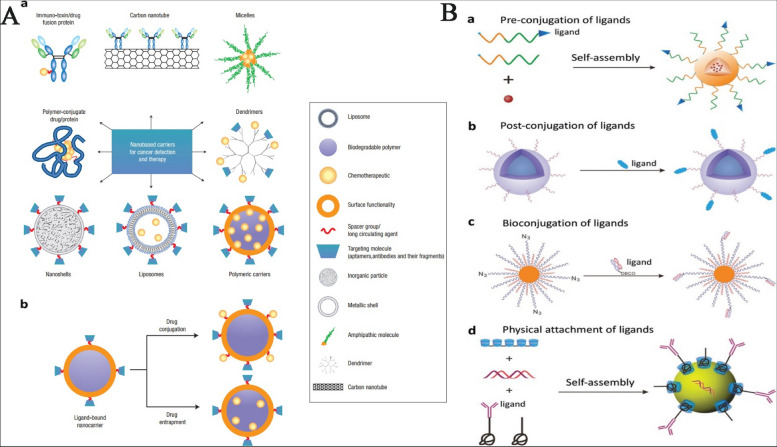Fig. 7.
A Different types of nanocarriers that can be used for targeting cancer. The main components of these delivery agents usually consist of a nanocarrier, a targeting moiety that is connected to the nanocarrier, and a cargo, which can be the desired chemotherapeutic drugs. The diagram shows a range of possible delivery agents, and a schematic representation of the drug conjugation and entrapment processes. In some cases, the chemotherapeutic drugs can be bound to the nanocarrier, such as in polymer-drug conjugates, dendrimers, and some particulate carriers, while in other cases they can be trapped inside the nanocarrier. Reprint from [132] with a permission from Springer Nature. B The various approaches for installing targeting ligands onto nanocarriers. The strategies are divided into four categories: preconjugation (A), postconjugation (B), bioconjugation (C), and physical attachment (D). Reprint from [34] with a permission from Wiley

